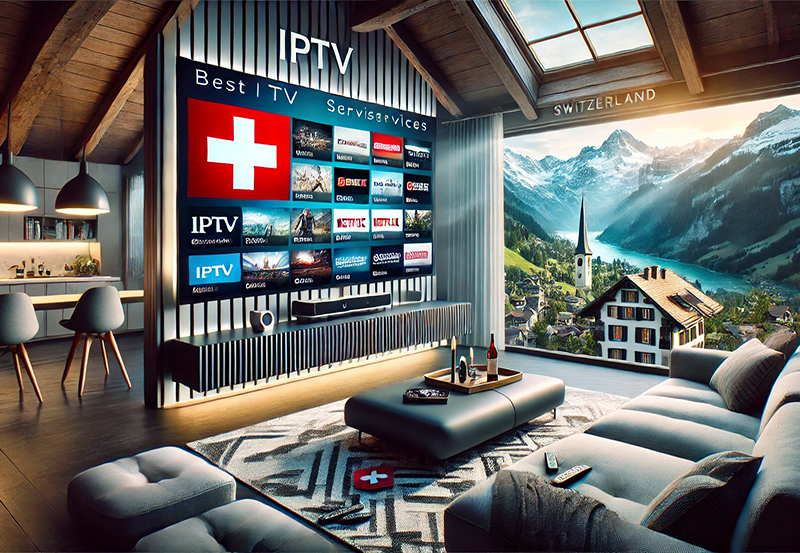As businesses evolve in a digital-first world, how they deliver and consume content is also changing. Entertainment, communication, training, and even advertising are integral parts of modern businesses, and choosing the right medium for these purposes can significantly impact operations. Two popular options are IPTV (Internet Protocol Television) and traditional cable television. While both have their benefits, understanding their differences and advantages for businesses is crucial to making an informed decision.
Buy 1 Year IPTV and Enjoy Unlimited Content
1. Cost Efficiency
Traditional cable often involves fixed packages with limited flexibility. Businesses must subscribe to specific bundles, which may include channels or features they don’t need. On the other hand, IPTV offers more tailored pricing structures. Businesses can select specific content or features, ensuring they only pay for what they actually use. Moreover, IPTV generally reduces infrastructure costs, as it relies on existing internet connections rather than requiring dedicated coaxial cables or satellite setups.
2. Customizability
IPTV provides a level of customization that traditional cable cannot match. Businesses can brand their IPTV interfaces, curate specific content playlists, and even integrate features like live-streaming company events or showcasing promotional content. Traditional cable offers a more rigid experience with pre-set channel lineups and limited customization options, making it less appealing for businesses that require tailored solutions.
3. Scalability
For growing businesses, scalability is a vital consideration. IPTV systems are inherently scalable, allowing companies to add new users, features, or services with minimal effort. Whether it’s a single office or a global enterprise, IPTV can adapt to a company’s needs. Traditional cable, however, is less flexible, often requiring physical installations and higher costs as the number of users increases.
4. Content Delivery Options
IPTV shines in its ability to deliver content across multiple devices, including TVs, computers, tablets, and smartphones. This is particularly beneficial for businesses with remote or mobile employees who need access to training videos, corporate broadcasts, or other essential content. Traditional cable, being tethered to physical setups, lacks this versatility and is limited to TVs with cable connections.
5. Interactivity
Interactivity is another area where IPTV excels. With features like video-on-demand, pause, rewind, and interactive menus, IPTV enhances the user experience and makes it easier for businesses to engage with their content. For example, companies can create interactive training modules or customer-facing interfaces. Traditional cable’s one-way delivery system lacks such capabilities, offering a more passive experience.
6. Integration with Business Tools
IPTV integrates seamlessly with modern business tools, such as analytics platforms, customer relationship management (CRM) systems, and digital signage solutions. Businesses can monitor viewer behavior, gather insights, and adapt their strategies accordingly. Traditional cable does not offer such integrations, limiting its utility beyond standard broadcasting.The Best Media Players for IPTV
7. Network Reliability and Performance
While IPTV depends on internet connectivity, advancements in broadband technology have significantly improved its reliability. Businesses with robust internet infrastructure can expect consistent performance from IPTV services. Traditional cable is less dependent on internet connections, which can be an advantage in areas with poor internet coverage. However, cable systems are susceptible to signal disruptions caused by weather or physical damage to infrastructure.
8. Security and Privacy
IPTV platforms often include advanced security features such as encryption and access controls, ensuring that sensitive corporate content is protected. Businesses can implement VPNs or firewalls to secure their IPTV streams further. Traditional cable, on the other hand, lacks these modern security measures, making it less suitable for scenarios where content privacy is essential.
9. Advertising and Branding Opportunities
For businesses that rely on customer engagement, IPTV offers unparalleled advertising opportunities. Customizable interfaces and targeted ads enable companies to deliver tailored messages directly to their audience. Traditional cable’s advertising options are broader and less targeted, reducing their effectiveness in business-specific applications.
10. Future-Proofing
IPTV is designed with future technology in mind. As businesses adopt more advanced tools like AI, blockchain, and cloud computing, IPTV services are well-equipped to integrate these innovations. Traditional cable, however, remains bound by its legacy infrastructure, making it less adaptable to technological advancements.
Conclusion
For businesses, IPTV presents a more versatile, cost-effective, and scalable solution compared to traditional cable. Its ability to deliver content across devices, integrate with business tools, and offer customized features makes it a powerful tool for modern enterprises. While traditional cable may still have a place in areas with limited internet connectivity, IPTV is the clear winner for businesses looking to stay competitive in a digital-first world. By choosing IPTV, companies can enhance communication, engage customers, and future-proof their content delivery strategies.Using Amazon Firestick for IPTV: Step-by-Step Instructions





